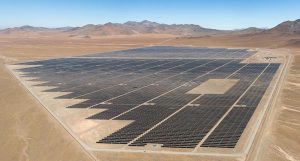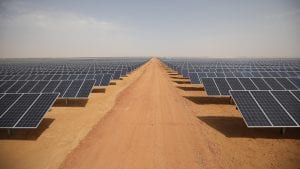EEnergy Informer
If you don’t like the answer, look for another. That may be the advice for both the opponents and proponents of renewables, climate change, distributed solar and a number of other controversial topics where reports and studies with contradictory results come out with increasingly frequency. Depending on your inclination, you can always find a study that fits your beliefs.
In the case of distributed solar PVs, a number of studies by various organizations have come up with different results. The variations may be attributed to different assumptions on how the costs and benefits are calculated, applicable tariffs including the prevailing net energy metering laws, whether the panels are owned or leased and under what terms and conditions, discount rates, applicable state and federal tax credits and/or other incentives, solar insolation patterns, the size and orientation of the  panels and a number of other parameters. With so many variables to fudge –oops, adjust – no wonder there are such a divergence of answers. Hopefully, there is one to suit anyone’s taste and inclination.
panels and a number of other parameters. With so many variables to fudge –oops, adjust – no wonder there are such a divergence of answers. Hopefully, there is one to suit anyone’s taste and inclination.
For those who want a high, rather than a low, number Karl Rabago, the Ex. Dir. of Pace Law School Energy & Climate Center is the place to look. He and colleagues have conducted 3 distributed solar valuation studies for the city of Austin, TX – which has its own utility – and for regulators in Minnesota and Maine.
Taking into account a number of avoided costs and counting a number of benefits gained, their results suggest that distributed solar provides benefits that exceed the prevailing retail tariffs, usually by a significant margin.
In the case of Maine, Rabago’s methodology puts the levelized value of distributed solar generation at 33 cents/kWh using a 25- year time horizon. By his reckoning, this includes roughly 14 cents/kWh in avoided costs plus roughly 20 cents/kWh in societal benefits as illustrated in table in page 18.
Applying the methodology – which is spelled out in excruciating detail in the report – to service areas of Maine’s major utilities, the implications are clear. Distributed solar is not the evil it is made out to be, assuming all the benefits including those that accrue to the society at large – rather than the network and/or the solar or non-solar customers – are included.
As with any study, one has to read the fine print, of which there is plenty. Yet, as scholarly as the Maine study appears to be, it is one of many and unlikely to resolve the controversy.
All studies of the costs and benefits of distributed solar, however, agree on a few basic points:
- How much consumers are paid for excess generation, which is typically fed into the network, matters a lot. Reduce the feed- in-tariff and the attractiveness of solar PVs disappear;
 Fixed fees, especially if excessive, significantly reduce the commercial payback of PVs. While $10/month may not kill distributed PVs, $50 most likely will (preceding article); and
Fixed fees, especially if excessive, significantly reduce the commercial payback of PVs. While $10/month may not kill distributed PVs, $50 most likely will (preceding article); and- Design of residential tariffs matter. Flat rates, especially if they are high, are a boon to solar PVs; time-of-use (TOU) tariffs could be a plus or a detriment – depending on how they are applied, of course.
A July 2015 report by Lawrence Berkeley National Laboratory (LBNL) confirms many of these facts as illustrated in graph on bottom of page 17.
And, of course, the 2 most important variables are the prevailing retail tariffs (graph on bottom of page 18) and the level of solar insolation. Denmark and Germany, for example, have high retail tariffs but not necessarily a lot of sunshine. Spain, Australia and Italy, on the other hand, have high tariff and plenty of sunshine. It is not hard to guess where distributed solar is popular – all else being equal.
 Others dismiss many such arguments and studies as mostly irrelevant so long as the cost of solar panels continue to fall as projected universally while retail tariffs continue to rise. Speaking at the recent convention of Edison Electric institute, the lobbying arm of the US investor-owned utilities in New Orleans, Jim Hughes, the CEO of FirstSolar (photo on left) one of the biggest US solar developers predicted that by 2017 the cost of solar PVs will plunge to under $1/watt fully installed.
Others dismiss many such arguments and studies as mostly irrelevant so long as the cost of solar panels continue to fall as projected universally while retail tariffs continue to rise. Speaking at the recent convention of Edison Electric institute, the lobbying arm of the US investor-owned utilities in New Orleans, Jim Hughes, the CEO of FirstSolar (photo on left) one of the biggest US solar developers predicted that by 2017 the cost of solar PVs will plunge to under $1/watt fully installed.
At that price, it does not much matter whether utilities pay for the excess generation fed into the grid or how much. Many consumers will focus on becoming self-sufficient. And some of the excess generation they may store.
Hughes also pointed out that despite all the controversy surrounding distributed solar, the real action is – and will likely remain – in utility-scale solar plants, which can be built at a fraction of the cost of the distributed rooftop variety. Compare the cost of growing corn in the backyard vs. that of a massive commercial farm on large scale to get the gist of what Mr. Hughes is talking about.
He pointed out to several recent auctions in the US and elsewhere where solar projects have come in around 4 cents/kWh. He added, “I fully believe that within 10 years we’ll be talking about low-3 cent power on a peak basis.” What about the solar investment tax credit (ITC), which is expected to drop to 10% from the current 30% in 2017 and possibly expire thereafter? Hughes called the expiration of the ITC “irrelevant.” That may be an over-statement, but once again, one can get the gist of the argument.
Hughes, like many others, says community solar is where a lot of action will be. It will give consumers, many of whom may not have a viable option to install their own solar panels, to share in a low-cost, large- scale scheme.
 Within the US utility industry, many executives are beginning not only to accept, but are in the process of internalizing the rapid transformation of the power sector. Speaking at the same convention, Ted Craver, the CEO of Edison International, the parent of Southern California Edison Company (SCE) said:
Within the US utility industry, many executives are beginning not only to accept, but are in the process of internalizing the rapid transformation of the power sector. Speaking at the same convention, Ted Craver, the CEO of Edison International, the parent of Southern California Edison Company (SCE) said:
“Southern California Edison is focused on creating a modern, bidirectional grid that can accommodate California’s growing solar generation capacity any time of day,”
adding,
“If a customer spends $15,000 to $20,000 to put solar panels on his roof, then the utility better be prepared to take on the electricity when the customer has excess and, in turn, provide electricity when he needs more. If SCE can’t accommodate that customer, the customer will invest a little more money on energy storage and disconnect from the grid completely. Then we have lost a customer for good.”
Utterances such as this would have been unthinkable a few years earlier. They are rapidly becoming commonplace, and not just in the US.
Perry Sioshansi is president of Menlo Energy Economics, a consultancy based in San Francisco, CA and editor/publisher of EEnergy Informer, a monthly newsletter with international circulation. He can be reached at [email protected]











